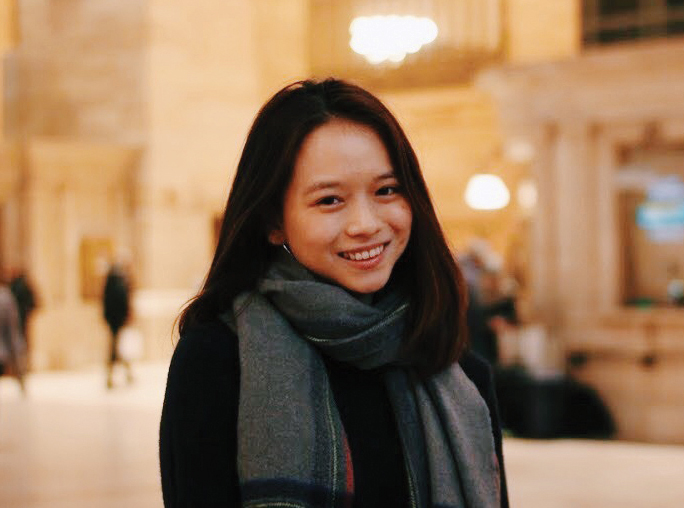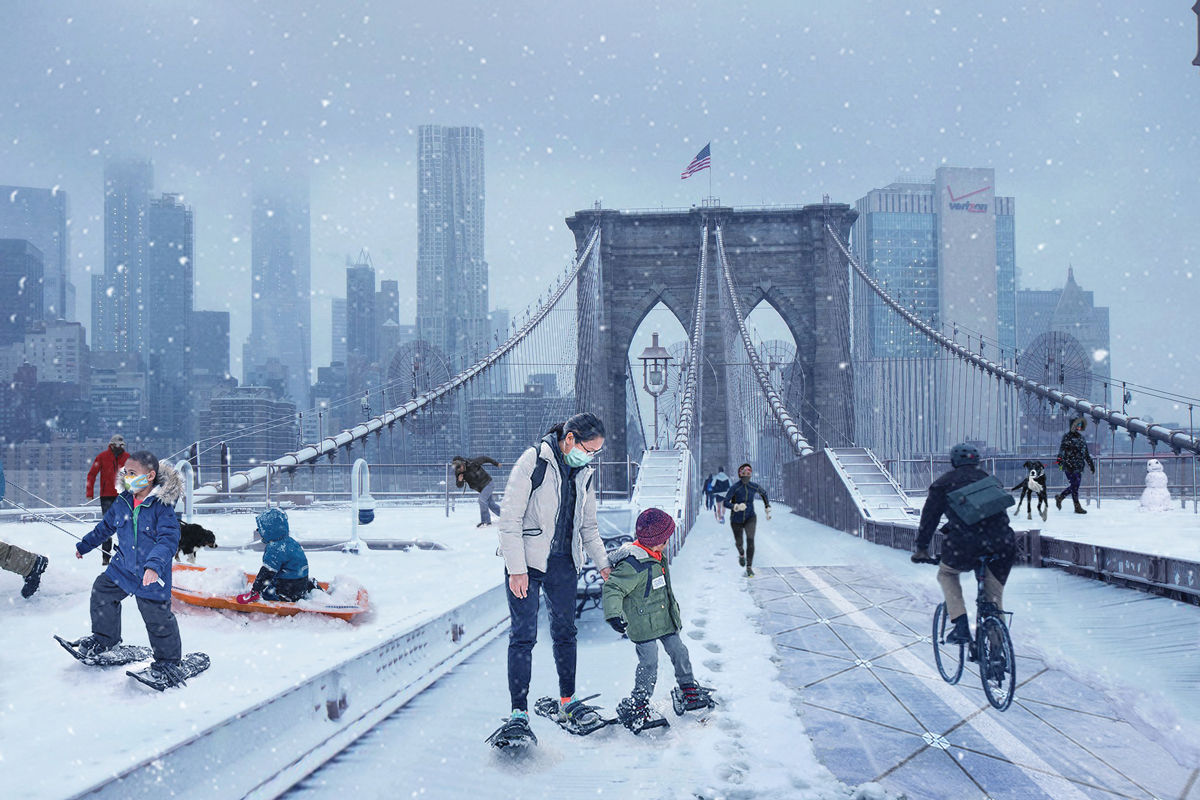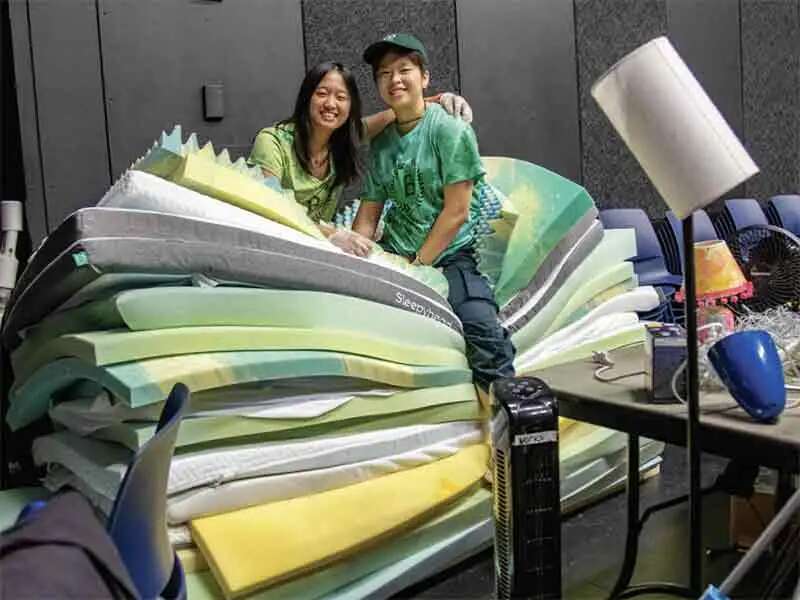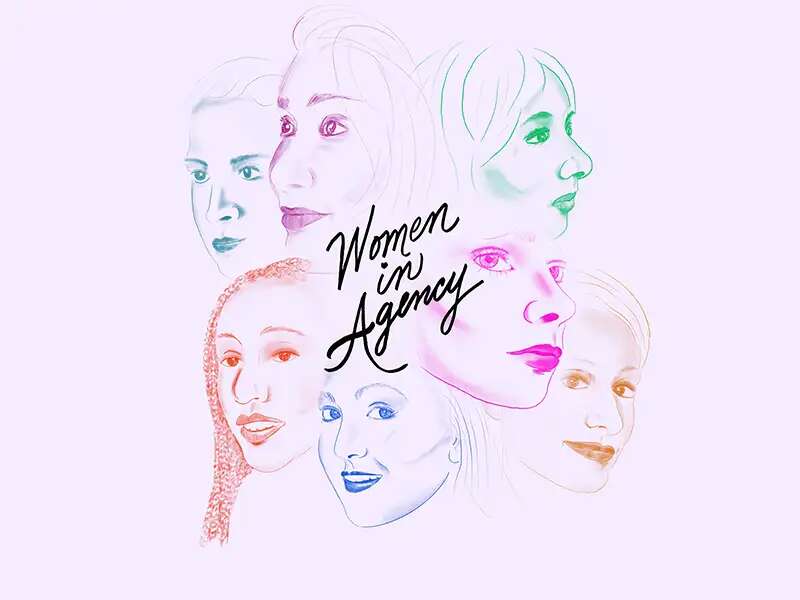

Architecture and psychology major Shannon Hui ’22 didn’t wait until she joined a firm to introduce innovative architectural ideas to the world. In fact, Hui and her team (Yujin H. Kim ’19CC and Kwans Kim from NYU’s Class of 2024) have already made their mark as winners of the young adult category of the Reimagining Brooklyn Bridge Competition. The contest was presented by the Van Alen Institute, an architecture and urbanism nonprofit organization, which challenged people to rethink the bridge’s walkway.
The call to update the bridge came as the first wave of the COVID-19 pandemic upended New York City, adding a new element to consider: how to social distance on the bridge’s overcrowded walkway. The public was invited to vote on entries through July 30, and winners were announced on August 17, via the organization’s website.
Tapping into three guiding principles — preservation, diversity, and future progress for change — Hui’s team designed their “Do Look Down” installation to feature a glass walkway above the bridge’s girders, with an LED projection system for the adjacent bridge spaces to display art that honors the city’s cultures, histories, identities, and more. Hui shares how the pandemic played a role in her design choices, what she’s most looking forward to this fall, and how Barnard faculty gave her the tools needed to think of new uses for a 137-year-old structure.
How did you prepare for this competition, and how did the pandemic inform your approach?
Our team decided to put something together on a whim after seeing a social media ad for the competition. Despite having very different academic interests — Yujin is studying for his Ph.D. in math, while Kwans will be a first-year [undergraduate] and has a passion for the performing arts — it worked because we could each approach the problem with our own agendas, as we have all used the bridge in our own ways.
I think that there has been an urgent drive to reimagine how people can interact with one another and relate to the public realm during and post-COVID, in addition to its intersections with racial and queer justice. This health crisis has violently amplified the systemic inequities that are built into New York’s existing urban infrastructure, and for designers and planners to continue to operate within a vacuum is a position of immense privilege. More than anything, this competition became an opportunity for us to not necessarily provide all the answers to what a “better” Brooklyn Bridge represents but to start conversations about meaningful public spaces where people can feel seen and heard — not just in an idealized future, but now.
What did you learn from Barnard and faculty that helped you with this project?
In developing our proposal, our first and foremost inspirations were the local stakeholders we had the opportunity to engage with and receive feedback from. Throughout this process, we worked closely with representatives of the Van Alen Institute, New York City Council, and other civic institutions who were instrumental to the formation of our final designs.
My architecture studios and lectures at Barnard, under the instructions of assistant professor of architecture Anooradha Iyer Siddiqi and Lindsay Harkema [founder of the design collective WIP], had instilled in me the value of embedding historical consciousness and urban theory in my work. And adjunct assistant professors of architecture Alicia Tam Wei and Jason Kim and Barnard studio instructor Todd Rouhe taught me to be intentional with representational techniques as modes of architectural analysis and speculation.
I was also fortunate to do an internship at a lighting design firm in Hong Kong this summer, supported by the Beyond Barnard internship program. This provided me with both a technical and a theoretical foundation to think about not only how the bridge looks during the day but also how intentional lighting design can completely transform the experience of New York City’s public monuments and spaces at night.
What was most exciting — or terrifying — about reimagining one of the most iconic bridges in the world?
Apart from its mobility issues and opportunities to optimize the distribution of available space, I’m not sure anyone really asked to “change” the Brooklyn Bridge. It’s an icon of the City and was a technological feat of its time. When we first started brainstorming ideas for our proposal, we struggled to think of structural interventions that wouldn’t compete heavily with the existing bridge and be upsetting to New Yorkers. This led us to scrap all of our initial ideas and form the three following guiding principles: (1) The current form and aura of the bridge must be preserved, and any enhancements should be kept unobstructive or reversible; (2) As a premier landmark, the bridge has a certain duty to equitably represent the diversity of peoples that it bridges; and (3) The proposal should not be static in its capacities but instead possess enormous potential for future progress and change.
So, I guess both the most exciting and terrifying part about participating in this competition was the Brooklyn Bridge itself.
Do you have a favorite bridge or building?
It’s hard for me to identify a singular favorite structure, but I always like to tell people about the High Line. I participated in a High Line Feminist Field Trip, hosted by the Athena Center for Leadership Studies, during my first year and loved learning about the nonprofit’s efforts to champion civic engagement, social justice, and urban gardening through education and programming. And needless to say, the public space is visually extraordinary.
At the same time, the High Line’s role in the dynamics of its surrounding neighborhoods offers a critical lens to the practice of public art and urban renewal, which drives me to be deliberate and sensitive when considering the communities that I hope to serve as a designer.




